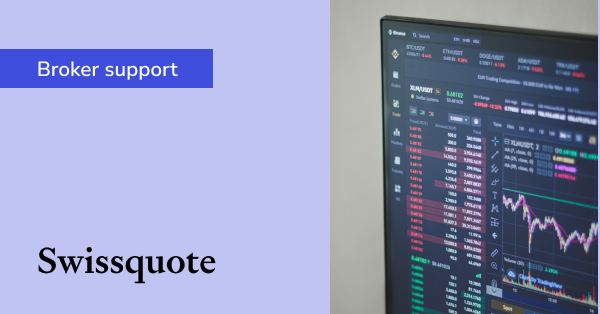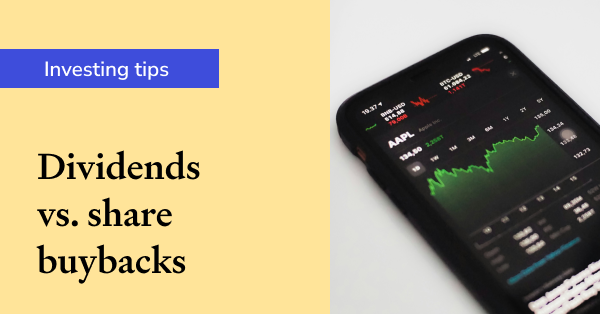How to calculate your NZ FIF income
Disclaimer: This article is for informational purposes only and does not constitute a specific product recommendation, or taxation or financial advice and should not be relied upon as such. While we use reasonable endeavours to keep the information up-to-date, we make no representation that any information is accurate or up-to-date. If you choose to make use of the content in this article, you do so at your own risk. To the extent permitted by law, we do not assume any responsibility or liability arising from or connected with your use or reliance on the content on our site. Please check with your adviser or accountant to obtain the correct advice for your situation.
As a New Zealand based company, Sharesight was built with the needs of Kiwi investors in mind from day one. Beyond using it to track prices and dividends for shares listed on the NZX (and at least 40 global share markets), NZ investors also rely on Sharesight’s portfolio tax reports, which are designed according to IRD rules.
One such rule involves foreign investment fund (FIF) income, which applies to New Zealand residents with certain offshore holdings, such as foreign shares and managed funds. In certain cases, there are special tax implications for investors who hold these investments.
Read on to learn:
What is a foreign investment fund (FIF)?
As stated by the New Zealand Inland Revenue Department (IRD), a foreign investment fund (FIF) is an offshore investment held by a New Zealand-resident taxpayer who holds:
-
Less than 10% of the shares in a foreign company
-
Less than 10% of the units in a foreign unit trust
-
Between 10% and 40% of the shares in a foreign company which is not a CFC
-
An interest in a life insurance policy where a FIF is the insurer and the policy is not offered or entered into in New Zealand
-
An interest in a foreign superannuation scheme
It does not include interest earned from term deposits, bonds, debentures or money lent.
Changes to FIF income rules
Before we go any further, here’s a bit of background information:
-
In previous years, the IRD published an Australian share exemption lists – also known as the IR871
-
The list indicated whether an Australian company listed on the ASX (excluding listed investment companies) was exempt from the FIF rules for that financial year
-
The IRD enacted changes from 1 April 2017 to simplify the exemptions list
-
The key change is basically the removal of any reference to an approved index and instead the company simply has to be on the official list of ASX limited (other rules still apply)
-
These changes take effect for the 2017-2018 tax year and beyond.
How to use Sharesight to determine whether you have FIF income (and if so, how much)
As a result of these IRD rules, investors who have certain types of overseas investments may have earned FIF income. And while the IRD has an online tool that lets you check if you are required to do anything under the FIF rules, if you determine that you do, the actual calculations can get quite complicated.
The good news is that investors on a Sharesight NZ Expert or Sharesight NZ Professional plan can run their own FIF report in just a few clicks. Here’s how to do it:
1 – Determine whether any of your holdings are subject to FIF
Sharesight automatically flags any holdings within your portfolio which are subject to FIF rules:
We recommend double-checking your FIF-included companies against the IRD’s Australian share exemption list. If you notice any holdings that are not automatically included/excluded by Sharesight, please reach out to Sharesight support and we will rectify any issues.
2 – Calculate your FIF threshold amount
Sharesight determines whether you exceed the FIF threshold amount (generally $50,000 for individuals). Based on the example above, the answer is "yes" because the peak balance is $172,551.69.
3 – Calculate your claimable tax
If you exceed the FIF threshold, clicking the "Calculate" button will automatically calculate your FIF income:
Sharesight automatically calculates your FIF income using both the Fair Dividend Rate Method and Comparative Value Method. In most cases an individual or family trust is permitted to use the lower of the two income calculation methods to report their taxable income in a given tax year.
For more information on how Sharesight calculates these, see:
-
Sharesight FIF report fair dividend rate method help page
-
Sharesight FIF report comparative value method help page
Ultimately the total claimable overseas tax paid (combining both the value from the non FIF overseas tax paid amount and FIF total claimable overseas tax paid amount) can be entered into the NZ IR3 income tax return at field 17A and can be used to offset the income tax payable.
How to calculate your FIF tax with Sharesight webinar
Watch this webinar to learn how to use Sharesight's FIF report to calculate your FIF income and tax payable.
Embedded content: https://youtu.be/Arnlzs6lZQ0
Sharesight clients love the FIF report
I used the FIF reports for the first time and it greatly assisted the preparation of 2013/14 years tax returns. Sent copies of report to IRD with the returns and it was no problem. Well done Sharesight and well worth upgrading to include this reporting facility.
RICHARD MADDREN – SHARESIGHT CLIENT SINCE 2008
We have been using Sharesight for several years. It makes it easy to review portfolio performance, keep track of income and manage those awful FIF calculations at tax time. The subscription is easily recovered in time savings at year end...
MARGARET HOLMES – SHARESIGHT CLIENT SINCE 2010
Get your FIF report today
By compiling all your portfolio data in one place, Sharesight eliminates the paper-chase and headaches normally associated with performance and tax reporting. To get started, simply sign up for a FREE Sharesight account and add your holdings. From there you can upgrade to an NZ Expert plan to get INSTANT access to your FIF report, as well as other premium features including:
-
Traders tax report – Calculates taxable gains for individuals who hold shares on revenue account (i.e. they are classified as traders by the IRD)
-
Diversity report – Shows how your portfolio is diversified across various groupings, at a chosen point in time
-
Benchmarking – Enables you to select any ETF in the Sharesight database to compare against a holding or your overall portfolio
-
Contribution analysis report – Explains the drivers behind your portfolio’s performance, be they stock selection, asset allocation, or exposure to certain countries, sectors, or industries
Sign up for a FREE Sharesight account and get started tracking your investment performance (and tax) today. Plus, if you upgrade, your Sharesight subscription may be tax deductible.
If you are a New Zealand tax resident and you derive income from the sharemarket, your Sharesight subscription may be tax deductible. Check with your accountant for details.
MORE INFO
- Sharesight Help – FIF report
FURTHER READING

How Sharesight helps advisors track net worth and simplify compliance
We talk to Ryan Jones, Partner, Accountant and Financial Advisor at Jones Louros, about how he uses Sharesight to manage his clients’ investment trusts.

Automatically track Swissquote trades with Sharesight
If you trade using Swiss broker Swissquote, you can automatically import your trading data to your Sharesight portfolio.

Dividends vs. share buybacks: Which is better for investors?
We take a look at dividends and share buybacks, discussing the pros and cons of each, the tax implications and which one is more beneficial for investors.